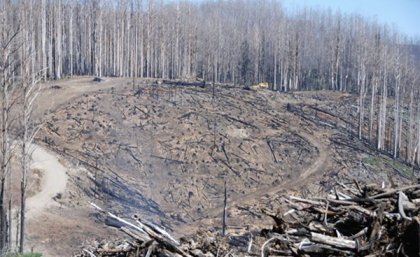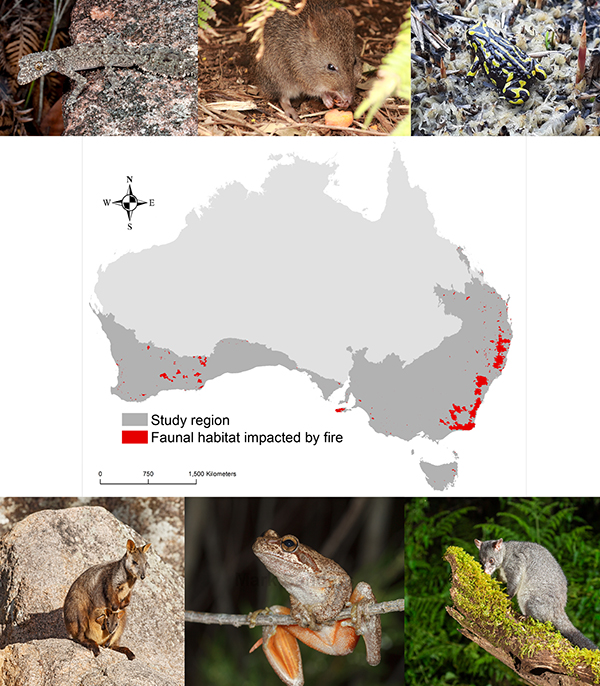
The damage caused by the catastrophic 2019-2020 Australian bushfires could lead to a dramatic jump in the number of native species at risk, according to University of Queensland-led research.
21 threatened species – including the Kangaroo island dunnart and Long-footed potoroo – are among 70 animals which have had much of their habitat affected by the blazes.
UQ School of Earth and Environmental Sciences PhD candidate Michelle Ward said about 97,000 square kilometres of vegetation in southern and eastern Australia burned, with that land considered habitat for at least 832 native animal species.
“Many of the species impacted by these fires were already declining in numbers because of drought, disease, habitat destruction and invasive species,” Ms Ward said.
“Our research shows these mega-fires may have made the situation much worse by reducing population sizes, reducing food sources and rendering habitat unsuitable for many years.”
The team found 49 species not currently listed as threatened, including Kate's leaf-tailed gecko (Saltuarius kateae) and the short-eared possum, now warrant assessment for listing under the Environment Protection and Biodiversity Conservation (EPBC) Act.
“If these EPBC assessments find that all 49 animals meet listing criteria, the number of threatened Australian terrestrial and freshwater animals would increase by 14 per cent,” she said.
 UQ’s Professor James Watson said anthropogenic climate change was exacerbating fires in Australia.
UQ’s Professor James Watson said anthropogenic climate change was exacerbating fires in Australia.
“While fire is a crucial aspect of many ecosystems, we’re witnessing climate change-induced drought combined with land use management practices that make forests more fire prone,” Professor Watson said.
“We need to learn from these events as they are likely to happen again.”
Ms Ward said Australia needs to urgently re-assess the extinction risk of fire-impacted species to better protect unburnt habitats.
“We must assist the recovery of populations in both burnt and unburnt areas,” she said.
“This means strictly protecting important habitats, like unburnt refuges.”
The Federal Government has launched a Royal Commission to find ways to improve Australia's preparedness, resilience and response to natural disasters.
The research team included 24 scientists from UQ, Wildlife Conservation Society, University of Sydney, La Trobe University, James Cook University, The Nature Conservancy, BirdLife Australia, Charles Darwin University, Australian National University, CSIRO, Charles Sturt University and Macquarie University.
It has been published in Nature Ecology and Evolution (DOI: 10.1038/s41559-020-1251-1).
Image above left: Vertebrate fauna habitat burned during 2019–2020 mega-fires. Burnt area is shown in red and the study region is shown in dark grey. Species impacted by the recent bushfires (clockwise from top left, with proportion of habitat burned): Kate's leaf-tailed gecko, 100%; Long-footed potoroo, 82%; Northern corroboree frog, 26%; Short-eared brushtail possum, 64%; Littlejohn's tree frog, 62%; and Brush-tailed rock-wallaby, 38%. Credit: Anders Zimny, George Bayliss, Ben Scheele, Mark Sanders, Mark Sanders, Mark Sanders.
Media: Michelle Ward, m.ward@uq.edu.au, +61 474 037 657; Professor James Watson, jwatson@wcs.org, +61 409 185 592; Dominic Jarvis, Dominic.jarvis@uq.edu.au, +61 413 334 924.
.jpg)










